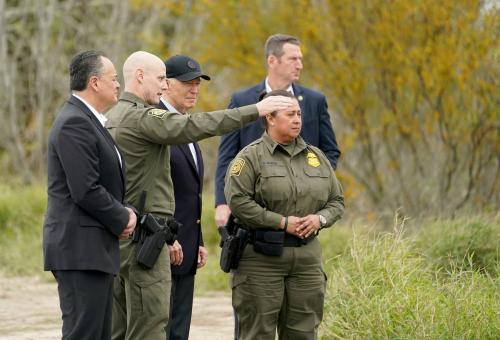Though comprising only 10 percent of annual immigration to the U.S., refugees are a distinct component of the foreign-born population in many metropolitan areas. Using data from the Census and the federal Office of Refugee Resettlement, this report examines where refugees come from—documenting significant region-specific flows tied to various overseas conflicts—and where they land, finding that refugee destinations have shifted away from typical immigrant gateways housing large foreign-born populations to newer, often smaller, places.
Findings
Although refugees only comprise approximately 10 percent of annual immigration to the United States, they are a distinct part of the foreign-born population in many metropolitan areas. Using data from the Office of Refugee Resettlement (ORR) on the location of initial settlement of refugees arriving between 1983 and 2004, this paper finds that:
More than 2 million refugees have arrived in the United States since the Refugee Act of 1980 was established, driven from their homelands by war, political change, and social, religious, and ethnic oppression. These flows were marked first by refugees primarily from Southeast Asia and the Soviet Union in the 1970s and 1980s during the Cold War period, followed by Europe in the 1990s during the Balkans period, and now a growing number from Africa in the 2000s during the civil conflict period.
Refugees have overwhelmingly been resettled in metropolitan areas with large foreign-born populations. Between 1983 and 2004, refugees have been resettled across many metropolitan areas in the United States, with 30 areas receiving 72 percent of the total. The largest resettlement areas have been in established immigrant gateways in California (Los Angeles, Orange County, San Jose, Sacramento), the Mid-Atlantic region (New York) and the Midwest (Chicago, Minneapolis- St. Paul), as well as newer gateways including Washington, DC; Seattle, WA; and Atlanta, GA.
In medium-sized and smaller metropolitan areas, refugees can have considerable impact on the local population, especially if the total foreign-born population is small. Refugees dominate the overall foreign-born population in smaller places such as Utica, NY; Fargo, ND; Erie, PA; Sioux Falls, SD; and Binghamton, NY helping to stem overall population decline or stagnation. Medium-sized metropolitan areas like Fresno, CA; Des Moines, IA; Springfield, MA; and Spokane, WA also have a strong refugee presence.
The leading refugee destination metro areas have shifted away from traditional immigrant gateways over the past two decades, while newer gateways are resettling proportionally more refugees. While New York, Los Angeles, and Chicago still accommodated large numbers of refugees in the 1990s, other metropolitan areas such as Seattle, Atlanta, and Portland (OR) have taken in increasing numbers. Furthermore, different groups of refugees have become associated with different metropolitan areas: Nearly half of Iranian refugees were resettled in metropolitan Los Angeles, one in five Iraqi refugees arrived in Detroit, and nearly one-third of refugees from the former Soviet Union were resettled in New York.
Unlike other immigrants, refugees have access to considerable federal, state, and local support to help them succeed economically and socially. Affordable housing, health care access, job training and placement, and language learning dominate the local service needs that need to be built and maintained. Ultimately though, metropolitan areas are the critical context for refugees as they settle into communities and become active members of their neighborhoods, schools, and workplaces.


